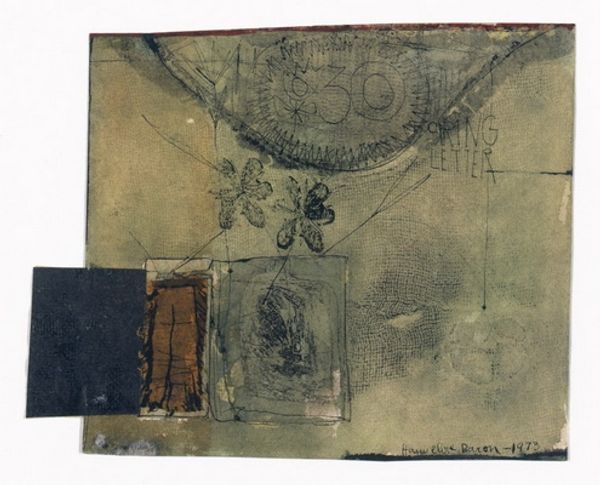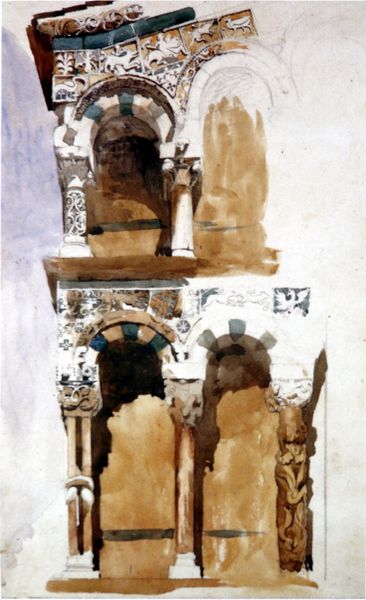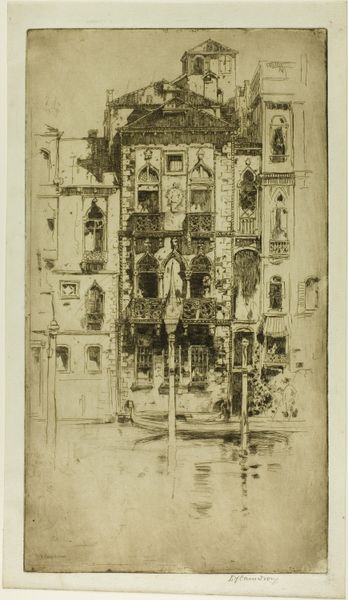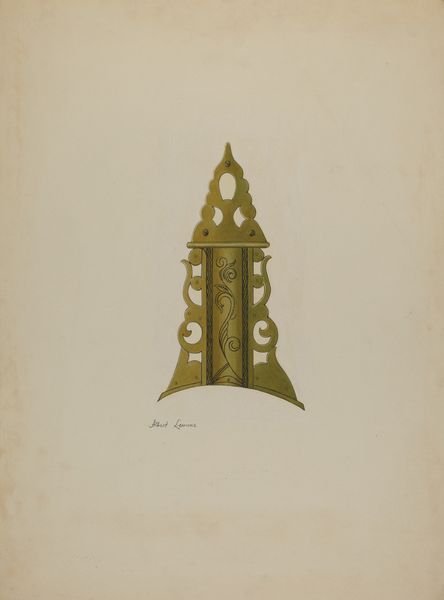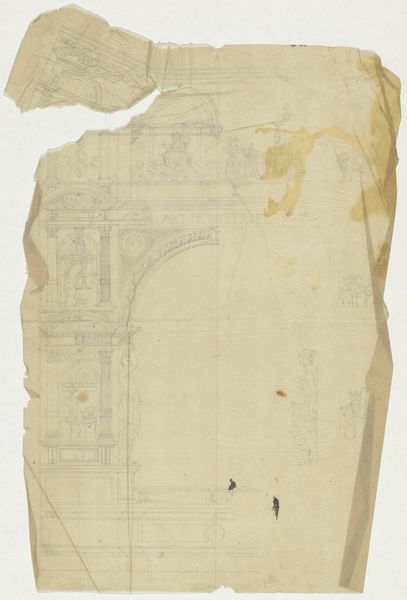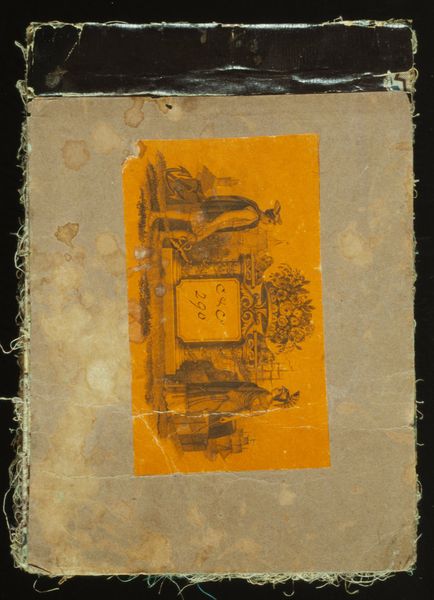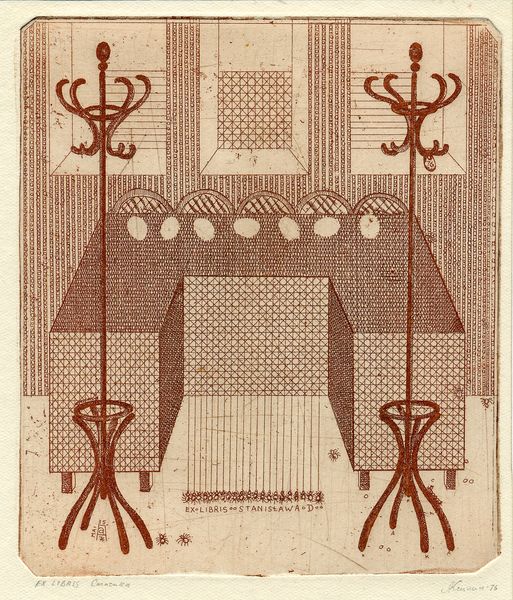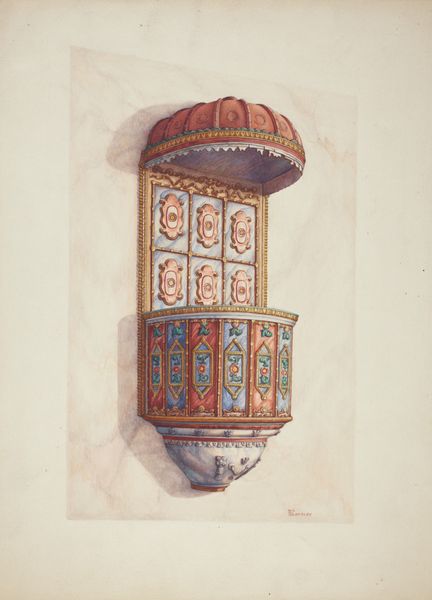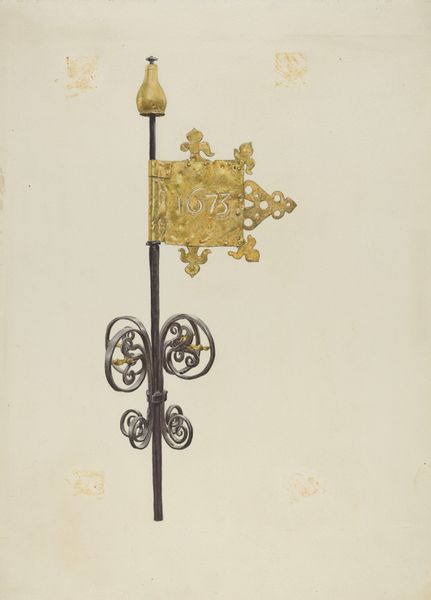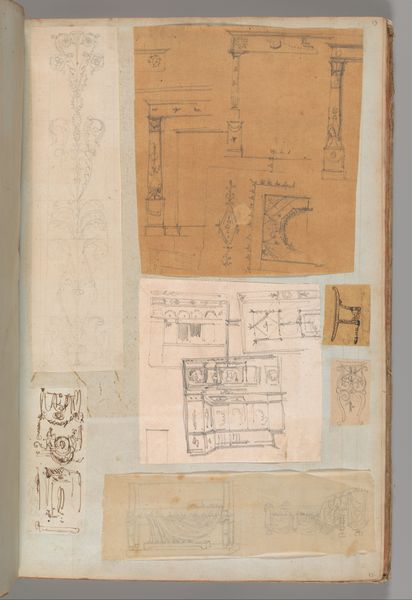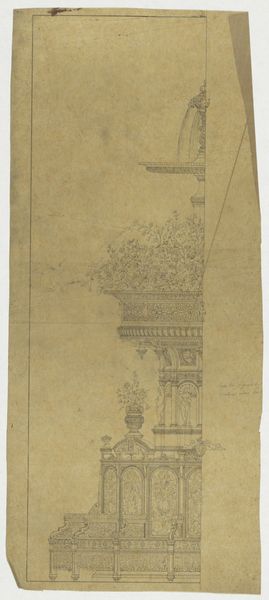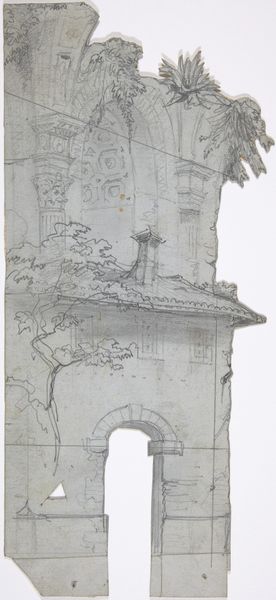
Tegning efter en Himmelseng set fra enden, samt notater og mål 1902 - 1905
drawing, mixed-media, coloured-pencil, paper, watercolor
drawing
mixed-media
art-nouveau
coloured-pencil
water colours
paper
watercolor
coloured pencil
mixed media
watercolor
Dimensions 268 mm (height) x 252 mm (width) (bladmaal)
Curator: Niels Larsen Stevns created this intriguing mixed-media drawing between 1902 and 1905. It’s titled "Drawing after a Four-Poster Bed Seen from the End, with Notes and Measurements." It seems quite fragile, rendered with watercolour, coloured pencil and ink on paper, and it offers more than just a visual representation. Editor: My immediate impression is a blend of the domestic and the theatrical. The canopy bed design, complete with meticulous measurements, feels almost like a stage set for a drama yet to unfold. The use of watercolour gives it a softness that’s offset by the precise architectural detailing. Curator: Precisely. The artist was working in a period of significant shifts in domestic design, heavily influenced by Art Nouveau. The four-poster bed itself, once a status symbol and a marker of private space, was undergoing transformation. Its presence was being negotiated within emerging discourses on hygiene and changing social norms. Think of how access to privacy was evolving in rapidly urbanizing areas. Editor: That's interesting. I’m thinking about the cultural weight of the rooster that is emblazoned on this bed – its bold, masculine assertion in a supposedly private feminine space. It’s such a striking, almost aggressive emblem amidst the delicate design details. Were these commissioned bedroom sets, markers of wealth? And if so, for whom was Stevns designing; for which socio-economic class? Curator: Larsen-Stevns was deeply engaged in Denmark's artistic and intellectual circles. Looking at his personal history can contextualize how this type of work reflected contemporary concerns. What's intriguing is to imagine what sort of narratives those occupants hoped would occur there? The bed is no longer simply a resting place, it is an event space with complex gender and class connotations. Editor: So it functions not just as a piece of furniture design but as a commentary on gender roles within the home during that era. This domestic object reveals layers of aspirations, control and perhaps anxieties linked to identity at that turn of the century. Curator: Precisely. Editor: Thank you. It truly transforms how I consider the meaning embedded within such "simple" objects.
Comments
No comments
Be the first to comment and join the conversation on the ultimate creative platform.
